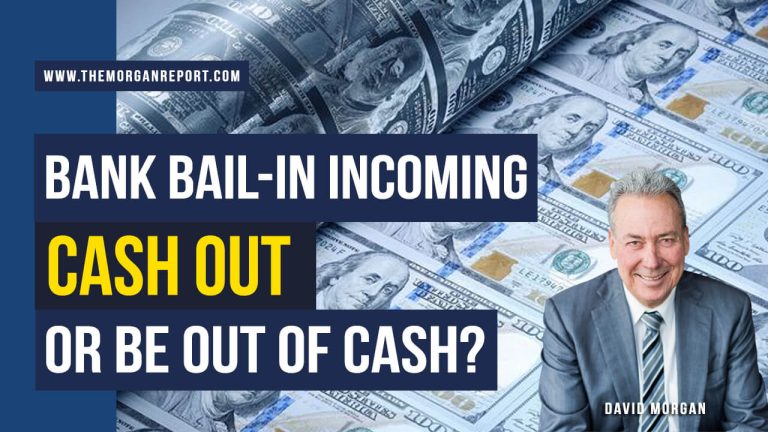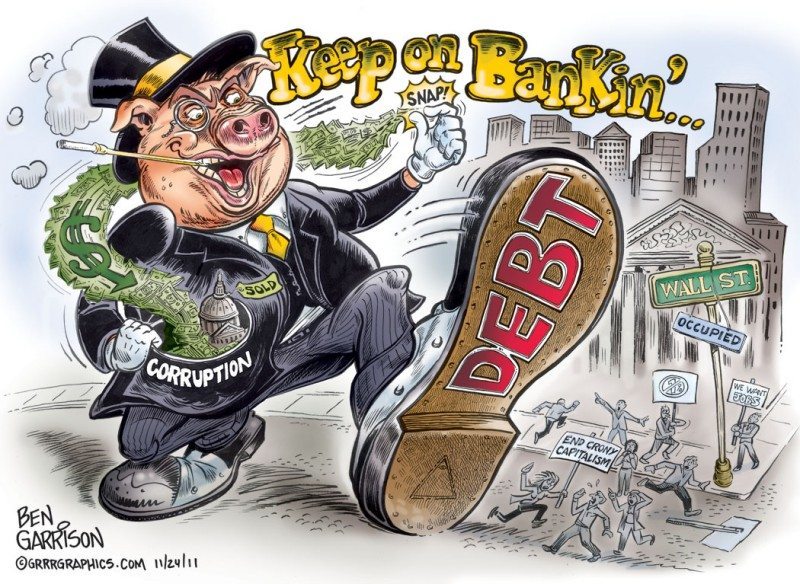
Why Wealth Preservation is Important Now More Than Ever
As most can recall, in 2008, banks — the ones deemed “too big to fail” — were supported by one of the largest government bailouts in world history. Expect to see another banking crisis soon, but this time, it’ll be different.
There won’t be bailouts this time because that option is now off the table. Back in 2018, the lawmakers behind Dodd-Frank assured taxpayers that they wouldn’t be the ones footing the bill if a banking crisis was to occur again. But here’s the catch: while bailouts aren’t an option anymore, taxpayers will still be footing this bill.
That is because this time around, bail-ins will be the new tool of choice for financial watchdogs, as they attempt to avert a financial crisis that is not only inevitable but imminent.

For context: a bail-in is the cancelation of bank debts owed to depositors and creditors. In essence, what this means is that banks have the legal right to take your hard-earned money. And, they have this legal right because most of us have signed away these rights long ago.
The fact of the matter is that the majority of the United States population has willfully entrusted banks with their wealth, without ever reading the fine print. Because if they did, they would realize that they are entirely unsecured creditors to the bank. And, while that might not have mattered to people in the past, it will when they begin to understand the magnitude of the incoming financial crisis.
Now, this brings us back to the ownership theory of money, an idea I have discussed at great lengths in the past: if you can’t touch it, you don’t own it. Let’s apply that to the fiat money system.
Money today is generally being stored in one of two ways— 1) traditional privately-held money, like cash, gold, and silver, and 2) the digital form of cryptocurrency. To be clear, almost all “money” held by the banking system is already in digital form. What many in the Western cultures do not realize is how many people worldwide are unbanked, out of the banking system altogether.
Owning cash and hard assets is necessary for numerous reasons, including the risk of electronic failures and internet blackouts, cyber-attacks, bank closures, and of course bail-ins. It is always important for individuals to protect their wealth and prepare for the worst possible scenario, but in this economic climate, it is critical.
The straw that breaks the camel’s back here is the amount of currency being digitally printed by governments, even as inflation continues to rise to unprecedented levels. The recent news from the Fed saw the estimate of average inflation climbing this year to 4.2% from 3.4%, signaling that inflation is something U.S. citizens will just have to get used to.
While the U.S. dollar still remains the world’s strongest and most trusted currency, the collective trust and confidence in its value are beginning to falter. And, when financial watchdogs recognize that it is a real problem and need to re instill confidence in the American banking consumer, a bail-in will likely follow.
The masses are waking up
The truth is becoming clearer to the world every day. It is not feasible to continue to print ourselves wealthy to avoid the fact that there is something drastically wrong with the financial system, and there is a real need for change.
Today’s financial system is broken, with no real relationship to the physical economy and all that is physically tangible to the human experience. Financial markets are meant to reflect the physical economy, but they miss the mark by a long shot.
The stock market continues to see massive gains, all while the United States population experiences a horrible unemployment crisis, with people struggling to secure basic necessities.
I founded the Morgan Report to provide people with the resources they need to make the right decisions that will help them build and preserve their wealth. And, throughout it all, I have never stopped to doubt the massive role that monetary metals like gold and silver play in enabling people to build and preserve their wealth.
Gold has had a compounded annual growth rate of 10% per year from the year 2000 to the present day. Clearly displaying gold’s function as an effective wealth preservation tool for the past twenty years. As for silver it has not kept up with gold, yet it has an annual compounded growth rate of about 9%, not too bad for a metal that is so unloved.
If the gold price is to reach $10,000, it’ll be a direct consequence of the demise of the current financial system. Meanwhile, with silver, it’s a different story: it’s more volatile, and it’s a much smaller market. But that’s a good thing, at least for silver stackers, because in the event of an explosion in the gold price, silver will follow course even faster as people rush to protect their wealth.
These were only some of the thoughts I shared when I joined Daniela Cambone of Stansberry Research to discuss the looming financial crisis. You can watch the full episode here.


